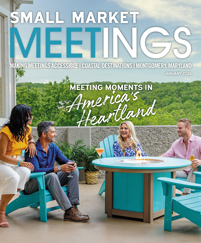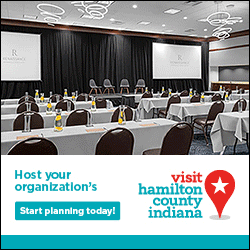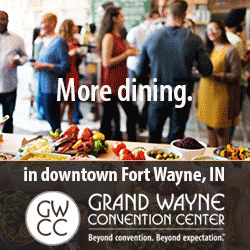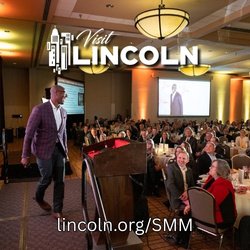The concept of trade shows has remained remarkably consistent for millennia. In ancient civilizations, merchants and artisans gathered in local marketplaces to peddle their goods, the same way companies line massive expo halls in their 10-by-10-foot booths today.
Throughout history, the shared goal has been to sell products and services and connect with customers. But even though the trade show isn’t going anywhere any time soon, it has changed. The pandemic hampered show attendance for a few years, and budgetary challenges mean fewer attendees and sometimes smaller shows. That means it’s more important than ever to boost attendee engagement and their perception of the show’s value.
Here’s what three trade show and event experts had to say about making sure attendees leave with more than a suitcase full of swag.
Interactivity Rules
When they first enter an exhibit hall, attendees are being exposed to a lot at once. With dozens or even hundreds of exhibitors eagerly awaiting their notice, it can get monotonous and downright exhausting.
“Attendees are tired of same old, same old with booths,” said Susan Piel, owner of Spiel Planning, a meeting, trade show and event consulting company in the San Francisco Bay area. “People put blinders on.”
To get people to take off their blinders, it’s important to have attention-grabbing — or better yet, hands-on — exhibits. Trade show organizers should encourage exhibitors to incorporate interactivity into their booth design.
“I’m a fan of using your product to sell your product,” said Tom Poalinelli, owner of Trade Show Tom, a trade show consulting company in the Dallas-Fort Worth area. “There shouldn’t be a static display. Demonstrate your product.”
This can include everything from cookware demos to tech demonstrations to promote apps. Poalinelli added that sound, motion and color are big draws for booths. Other methods include games or photo-ops or participation in booth passports or scavenger hunts.
Event swag has dual purposes: to entice attendees to come to a booth and to increase post-event brand awareness. But attendees should leave with something other than a branded koozie or water bottle, especially when so many people have sustainability on the brain.
One creative concept that’s taking the place of traditional booth swag is a charitable donation for each attendee who checks in to the booth. Companies can pledge a certain dollar amount or let the attendee choose which charity the company will send money to.
“Then they’re not taking home some swag item that’s going to go in the landfill, and they’re supporting a nonprofit at the same time,” said Kelley Millar, CEO of Flock Events, a Colorado Springs-based meeting and event planning company.
Another highly effective manner of capturing attention is with food and beverages, whether that’s having coffee stations throughout the trade show floor for attendees to gather around while they caffeinate or giving sponsors the opportunity to have an hors d’oeuvre or mocktail for attendees to try. There are plenty of ways to whet attendees’ appetites and gain their attention.
“Sponsors should absolutely have the first option to have the most fun, extravagant hors d’oeuvres or beverages at their booth,” said Millar. “Then you’re hearing that sponsor’s name, and it’s making people curious.”
Encouraging Connections
Trade shows exist to showcase products and services, but arguably the most important thing attendees leave with is the connections they make on and off the show floor.
“The absolute sweet spot for every conference is the white spaces in between,” said Millar. “That’s where attendees connect and meet; that’s where the magic happens.”
To ensure as many connections as possible are occurring, Millar recommends creating conditions ideal for conversation. Maybe that means turning down the volume on the show floor by omitting loud music or foregoing back-to-back speakers at mealtimes. After all, it’s hard for an attendee to get to know the person sitting next to them at lunch if they’re listening to a presentation the entire time.
Another connection you want to encourage is between vendors and attendees. Set up the trade show using appointments. Attendees can select who they want to meet with upfront and stop by booths at a designated time for an intentional conversation, and hopefully, a good lead.
If appointments don’t fit in with the show’s schedule or present logistical issues, there are other ways to facilitate one-on-ones. Piel recommends securing plenty of meeting rooms away from the show floor. Vendors can reserve these to meet with interested attendees for more detailed conversations. Plenty of exhibit halls have meeting rooms nearby, though the show floor can be arranged to include meeting spaces with flexible walls.
“If people are interested in learning more about the product, setting up one-on-one meetings in meeting rooms leads to more engagement,” Piel said.
Another design element that can boost connections is seating at or near booths. This can encourage attendees to stay and learn more about a product or even meet other attendees and chat. Comfortable seating encourages attendees to stay on the show floor longer and interact more with others.
More Than a Show Floor
Even though the trade show floor is the reason everyone’s in attendance, simply having the show floor with exhibitors may not be enough to keep attendees interested. That’s where having speakers, off-site events and additional activities can take any trade show to the next level. But keep in mind, the rule of maximizing engagement still applies.
Piel recommends drawing people to the trade show with exciting and engaging keynote speakers instead of simply including sponsored messages.
“Shows have a bigger presence when there’s a speaker/sponsor presentation we know people are interested in learning more about,” Piel said.
In today’s technology-saturated landscape, conference hosts and exhibitors are also competing for attention with attendee’s smartphones. Instead of fighting it, they can use it as a tool.
“It’s hard to get people away from their electronic devices, so if you can implement using their electronic device in sessions, that can be good,” said Millar.
Millar recommends using apps that let attendees type out their questions during presentations to keep them engaged with the presentation. They can use technology similarly on the trade show floor.
When it comes to off-site events, an evening event in a distinct location within the city is often a great idea. An event showcasing the destination’s most interesting local business or one of its most unique attractions is a great way to secure attendance and ensure attendees are participating even when the show isn’t going on.
Poalinelli recommends planners do their research to make sure any entertainment is aligned with the target audience. If the show focuses on recruiting young professionals, he says it wouldn’t be a good idea to hire entertainment that skews older.
Other options for evening events that can facilitate additional connections include networking dinners or dine-arounds that put attendees into small groups.
“That’s something for attendees to do to help them get to know others,” Poalinelli said. “It creates that networking and bonding moment.”












